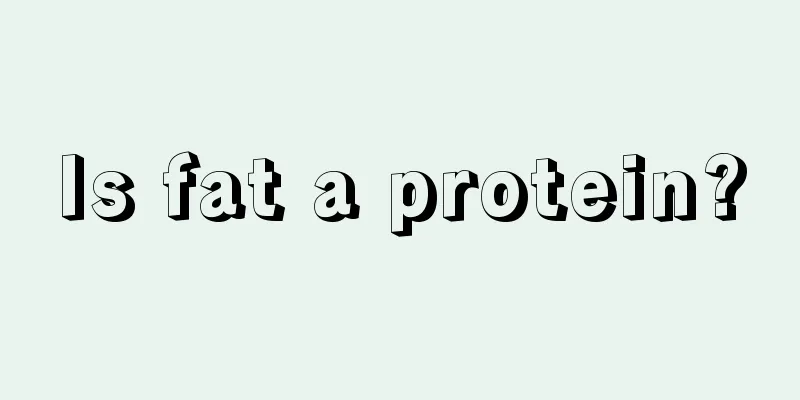Is fat a protein?

|
Fat is a tissue that stores energy. There is a large amount of fat inside the human body, and the amount of fat is the tissue that changes the most in the body. Some people are fatter because the fat tissue accounts for a larger proportion in their body, while some people are thin because the fat tissue accounts for a very small proportion in their body. Obesity caused by fat has a very adverse impact on health. Let’s take a look at whether fat is protein? 1. Different constituent elements. Protein is composed of C (carbon), H (hydrogen), O (oxygen), and N (nitrogen). Generally, protein may also contain P (phosphorus), S (sulfur), Fe (iron), Zn (zinc), Cu (copper), B (boron), Mn (manganese), I (iodine), Mo (molybdenum), etc. Fats are composed of C (carbon), H (hydrogen), and O (oxygen). 2. Different physiological functions. The physiological functions of protein include: constructing the human body, structural substances, carrier transportation, antibody immunity, hormone regulation, enzyme catalysis, and energy substance. The physiological functions of fat include: storing energy, keeping the body warm, and acting as a buffer during collisions. 3. Food sources are different. Protein food sources: milk, eggs, fish, lean meat, bean products, etc. Fat food sources: Foods such as lard, butter, egg yolk, peanut oil, sesame, beans and nuts contain more fat. Note: Protein is an essential nutrient for the human body, and we need to pay attention to the intake of high-protein foods in daily life. High-protein foods include animal proteins such as milk, meat, poultry, eggs, fish, and shrimp; another type is plant protein such as beans such as soybeans, lima beans, and black beans, and dried fruits such as sesame seeds, melon seeds, walnuts, almonds, and pine nuts. Because the types and proportions of amino acids contained in animal protein are more in line with human needs, animal protein has higher nutritional value than plant protein. High-fat foods refer to foods that are high in fat. Specifically, the components of oil are various saturated and unsaturated fatty acids, such as high-oil and fried foods, walnuts, sesame seeds, peanuts in plants, fried foods, fat, animal offal, cream products, etc. Long-term consumption of high-fat "junk food" may induce a variety of chronic diseases. If you want to control excessive fat in your body, you can use some foods that have a lipid-lowering effect to "eat" the fat in your body. |
>>: Protein interaction methods
Recommend
What are the diagnosis and treatment methods for atrophic gastritis?
Atrophic gastritis is a common gastric disease. I...
What shampoo is better for dry and frizzy hair
If you don't take proper care of your hair in...
What folk remedies can eliminate the unbearable pain of hemorrhoidal edema
Nowadays, many people work in offices and need to...
The treatment of early rectal cancer is mainly to control the primary disease
Normally, the treatment of colorectal cancer depe...
How to treat advanced nasopharyngeal carcinoma
Nasopharyngeal carcinoma is a relatively characte...
What causes colon cancer
In recent years, colorectal cancer has become one...
What does the uric acid test check?
In life, many people usually don't pay attent...
How to treat spinal disease?
Spinal diseases can have a great impact on our li...
What Chinese medicine is effective for advanced gastric cancer
What Chinese medicine is effective for advanced g...
One side of the abdominal muscle is bigger than the other side
Many men hope to have abdominal muscles on their ...
What are the symptoms of poor blood circulation
We should be alert to the symptoms of poor blood ...
What should I do if I have a toothache and a lump in my neck?
Toothache is a very severe painful feeling in lif...
Sequelae of laryngeal incision surgery
The throat is a very important part of us, but th...
What is the reason for the pain in the right lower abdomen
Abdominal pain is very common in life and can occ...
Is a belt effective for lumbar disc herniation
There are always some people in our lives who suf...









